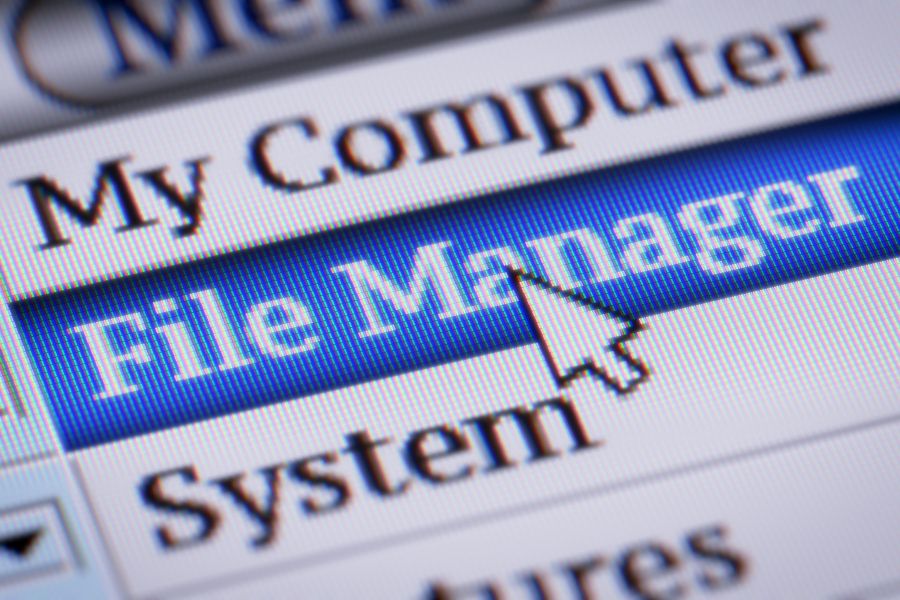A piece of software called a file management system helps businesses organize and keep track of their digital files. Users can store and access files in one place with these systems. It enables you to find what they need and work with other people.
But have you ever been interested in how systems for managing files work? In this article, we’ll talk about how file management systems work in 2023. We will look at how they store and organize files, give users access to files, and keep data safe.
It makes organizing files, folders, and other types of data easy by putting them in a hierarchical structure. There may be tools in a file management system for finding, copying, moving, deleting, and renaming files.
It also has tools for backing up, syncing, and keeping track of changes. Its primary purpose is to help people keep track of their digital assets. Then make their job easier by giving them a central place to store and manage files.
With an excellent way to organize your files, it can be easier to find what you need quickly. You could also lose important files if you accidentally delete them, if your hardware breaks, or if someone hacks your computer.
The document management solution can help with these issues. It can give users a central place to store and organize files, making finding and getting information easy.
It also adds safety features to ensure data isn’t lost or stolen. When team members can share files, they can also work better together. They can keep track of the different versions.
In general, a file management system can improve how things work and make people more productive . It can lower the chance that data will be lost. Because of this, both people and businesses can benefit from it.
How Does A System For Taking Care Of Files Work? A file management system stores and organizes files so they are easy to find and use when needed. The system sorts files and folders into groups that make sense by using a hierarchical structure.
Directories and subdirectories are used to do this. The system may also use metadata. It is extra information about a file, like who made it, when it was made, and what kind of file it is. It can help you find files more quickly.
Also, the best document management software might include sharing files, working together, and keeping track of different versions. It can ensure that files are safe and that only authorized users can access them.
Overall, a file management system makes storing, organizing, and getting to files easier. Because of this, it is an essential tool for businesses and people who deal with a lot of digital information.
Pros Of A Software Solution For Managing Files Most of the advantages of a file management system or other document management software depend on how easy they are to use. They should be well when they are set up. Even though this seems simple, it has a number of more comprehensive benefits:
Save Money On The Cost of Paper. Companies that make between $500,000 and $1 million per year can save up to $40,000 per year by using new technology to store files digitally. When you switch to managing electronic files, you save money on the costs of handling a lot of paper documents.
Do More With Less. About 20% of the time employees spend at work is spent looking for information. File management systems make it easier for employees to access information and edit documents. They can do it no matter where they are by making finding files faster and more thorough.
Make Users More Responsible With document version control, you can see everything that has happened to a document. This means file sharing can always see who changed a copy and when they did it. This makes it safer for authorized people to manage people and workflows.
Encourage Clear File Tracking For Archiving And Getting Rid Of Files With a sound file management system , you can keep track of a file for its whole life. This makes it easier to ensure you’re following all the rules and makes auditing less complicated.
What Kind Of File Management Systems Are There? There are many document management systems for managing files . It can be as simple as the ones that come with the operating system or it can be more complex. They are made for specific jobs or industries, allowing you to enjoy file management benefits.
Some examples include:
Operating system file managers These are simple ways to manage files that come with the operating system. Windows Explorer and the macOS Finder are two examples of these.
Systems for storing files in the cloud These systems store files in the cloud so that users can access them from anywhere with an internet connection. Dropbox, Google Drive, and OneDrive are all examples.
Digital asset management systems These are systems that are made especially for managing large groups of digital assets. Adobe Experience Manager and Extensis Portfolio are two examples.
Enterprise content management systems These are made for keeping track of a lot of documents. SharePoint and Documentum are two examples.
Database management systems These systems organize data in a way that lets users store, retrieve, and change information. MySQL and Oracle are two examples.
Best Strategies For File Management A well-organized file management system makes it easy to find information and gets it to the employees who need it faster. When companies use good strategies for document management solutions, they can:
Make sure to stay the same. Using a mix of letters and numbers to name folders will be hard to find files. Standardize file names so that users from different teams and departments can quickly determine their meaning. For example, you could put the version number, the type of document or project, or another consistent format in the file name.
Follow a set order: Keep all the files and documents for one project in the same folder. Make folders inside a “master folder” to make it easier to find things. So, users can only sort through short, messy lists of files to find the information they need.
Prioritize backing up data. The risks that come with handling paper documents are lessened by data capture technology. It can electronically store information in your centralized storage system. Investing in a file management system that works in the cloud will also keep sensitive information from getting lost.
How To Use a File Management System To Handle Files More Efficiently You can easily organize, store, and get to your files with a file management system, which will save you time and effort in the long run. We’ll talk about how to use a file management system to organize your digital life and keep track of your files.
There are several ways to use document management systems well so that you can handle files better:
Organize your files Make sure your files and folders have the same naming scheme and use a hierarchy to assemble related files. This will help you find what you need faster and keep your files in order.
Use metadata Adding metadata to files can help you find what you need quickly. This can include things like keywords, the date the file was made, who made it, and what kind of file it is.
Automate file organization Use software or tools that automatically organize your files based on rules or tags you set up beforehand.
Don’t lose your files. Ensure you back up your files often, so you don’t lose critical information. You can use storage solutions in the cloud or physical backups like external hard drives.
Secure your files Protect sensitive data with security measures like encryption and controls on who can access it. This will keep people from getting into your files without your permission and keep your information private.
Following these steps, you can use a file management system to handle files more efficiently and effectively.
Future Of File Management Systems In the future, file management systems may become more automated and better able to work with other technologies. It will use AI and machine learning to organize and categorize files automatically.
Having an effective document management system can help people find what they need faster. Also, cloud storage services and file management systems will likely work together more. It will make it easier to get to files no matter where you are.
Security will also remain paramount. To keep sensitive data safe, encryption and authentication are getting better. Lastly, file management systems must change to help people work together. You can still keep your security and privacy and still use remote access.



